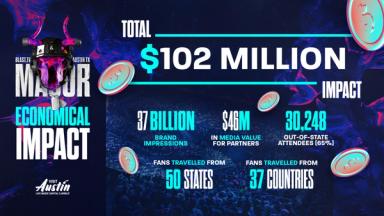What is damage prediction in CS2? Which pros use damage prediction and should you use it too


Damage prediction is a brand new feature in CS2 that has caused a fair bit of controversy.
Added as part of an update on November 13th 2024, Valve stated that "Damage prediction allows clients to immediately play the audio/visual effects of inflicting damage without waiting for confirmation from the server."
But what does this mean? What are pros damage prediction settings in CS2? And what should you settings be? In this guide, we'll answer all of these questions.
What is damage prediction in CS2?
It's understandable to not know what damage prediction is in CS2. Although the name makes it sound obvious, it's never been a feature in Counter-Strike before, and that makes it a little bit confusing as to why it exists now.
Damage prediction plays effects client side first, rather than waiting for them to happen on the server. This means that you'll experience things in your game that haven't actually happened yet, but the game thinks that they will happen.
This can, unfortunately, cause some issues. As Valve says in the patch notes for the damage prediction update:
"Damage prediction can make shooting feel significantly more responsive, but comes with the risk of occasionally being wrong (e.g. due to aim punch, tagging, or a death that your client isn't yet aware of)." - Valve

This can also have a lot to do with ping, hence why the damage prediction settings in CS2 are automatically disabled when you have high ping.
There are three settings for damage prediction in the game, two of which are disabled by default. Those settings are:
- Body shot effects (disabled)
- Head shot effects (disabled)
- Kill ragdolls (enabled)
These damage prediction settings can all be customised in the CS2 menus with ease, with each one able to be toggled as you see fit.

Pros and cons of damage prediction in CS2
Like all CS2 settings, damage prediction settings come with pros and cons.
In games where everyone has low ping, damage prediction will be able to work to its full potential.
In those games, a player with quick reactions will see the effects of damage prediction working correctly before they have actually happened in the server, allowing them to move to a second target faster than someone without the settings on might be able to.

However, in games where players have even 20-30 differences in ping, damage prediction can start to feel really inconsistent. As it says on the tin, damage prediction predicts shots, it doesn't confirm them. There's always a chance predictions are wrong.
This means, should you have the head shot effect setting enabled, that you could see a head go back and switch targets because you think you've got the kill, just for that person to end up not being dead and continue shooting you.
Therefore, damage prediction is something that you shouldn't rely on, as those ping differences are frequent within Counter-Strike games regardless of what region you play in. That said, if you are in a game where everyone's ping is low or at a similar value, it is worth turning it on.

Which pros use damage prediction in CS2?
If you're wondering which pros use damage prediction in CS2, then the answer is simple: not many.
In fact, of 120 pro CS2 configs gathered by Thour, only five of them use all three damage prediction settings. Four of those on the same team.
 Photo: @ThourCS2
Photo: @ThourCS2As you can see, only four of the members of Complexity and skullz of FURIA use all three damage prediction settings.
Of the 120, 73 pros have all options disabled, while 41 of them only have the kill ragdoll setting enabled.
Elite level pros such as s1mple and ropz both have all settings disabled, however 2024's player of the year donk has rag dolls enabled. This might be due to his aggressive playstyle, with the rag doll setting allowing him to switch between targets easier.
Should you use damage prediction in CS2
In truth, we can't answer this question. At least not consistently.
Whether or not you should use damage prediction in CS2 comes down to the specific game you are playing. In low ping games, damage prediction might make your game feel more consistent, however, in higher ping games, it will do exactly the opposite.
This inconsistency can lead to feeling frustrated with the game, and because of this, it might be worth keeping it off altogether. Sure, you won't get the benefits from when it does work, but it won't work more often than not, and changing the settings frequently will only add to the inconsistency.











